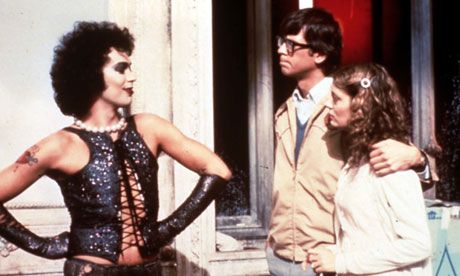Considering these discrepancies, how should we define a movie as a “cult classic,” and where did this cinematic tendency begin? For the most part, cult films have existed since the early days of cinema. In fact, Nosferatu (Murnau, 1922), a German film that is observed as the first vampire movie, was supposed to be destroyed due to a copyright issue with Bram Stoker’s 1897 book, Dracula (Hall). However, the film was kept alive by a small cult following that circulated illegal bootlegs, enabling it to become one of the most influential pieces of the horror genre. Many other films that are now regarded as classics suffered from very similar issues upon their initial release, such as The Night of the Hunter (Charles Laughton, 1955). When The Night of the Hunter was released, it was quite unsuccessful with audiences and critics, resulting in Laughton’s decision to never direct another picture. Nevertheless, the film gradually built a wider audience over the years and has since received an enormous amount of critical praise to the point where it is currently regarded as one of the greatest American films ever made.
Although the previous examples demonstrate the power of the cult film to define certain movies as cinematic classics, for the most part, cult films tend to be strange, offbeat, and stylized works that cater to a very special appeal. Moreover, they are often considered controversial because they step outside of standard narrative and technical conventions, or feature content that goes against culturally accepted norms (Dirks). A fitting example of this would be The Rocky Horror Picture Show (Sharman, 1975), a musical that featured transvestites in a mysterious Gothic castle. With its release, The Rocky Horror Picture Show also became an iconic pioneer of the interactive “midnight movie” craze, where fans attend movie showings dressed in costumes and bearing props (Dirks).
For some directors, embracing the cult film formula has ultimately defined their legacy. In the case of the oft-maligned Ed Wood, through cult films like Glen or Glenda? (1953), a docudrama about cross-dressing and transsexuality, and Plan 9 From Outer Space (1959), a story about invading aliens in California who animated the dead, Wood built a rather large following and developed a reputation for being the worst Hollywood filmmaker of all-time (Dirks). Meanwhile, in the case of the Coen Brothers, through cult films like Barton Fink (1991), a dark comedy about a New York playwright experiencing writer’s block, and The Big Lebowski (1998), a comedy crime film about an easy-going stoner in Los Angeles, the Coen Brothers were able to develop a quirky style that earned them tremendous followings and solidified their reputation as excellent filmmakers.
With all of that said, we are still left with our original question: how should cult films be defined and identified? As the film and arts critic, Adrian Martin, pointed out in his article “What’s Cult Got to Do with It? In Defense of Cinephile Elitism,” cult films should not be solely defined by their ability to attract a large, devoted following (Bentley-Baker). For him, the true mark of a cult film should be its ability to transcend from oblivion to veneration. While this certainly seems to be a valid indicator for understanding which films should be considered cult films, I am still not so certain that there is any foolproof checklist to gauge what defines a cult film. Overall, the very essence of the cult film seems to demonstrate how movies can function as an artistic medium that is subjective and never self-evident, making the cult film a very important genre for understanding the power and significance of cinema.
Works Cited
Bentley-Baker, Dan. "What Is Cult Cinema?" Bright Lights Film Journal. Issue 69 (2010): <http://brightlightsfilm.com/69/69cult_bentleybaker.php
Dirks, Tim, ed. "Cult Films." Filmsite. <http://www.filmsite.org/cultfilms.html>.
Hall, Philip. "The Bootleg Files: "Nosferatu"." Film Threat. 26 Oct 2007. <http://www.filmthreat.com/features/2056/>.


 RSS Feed
RSS Feed
